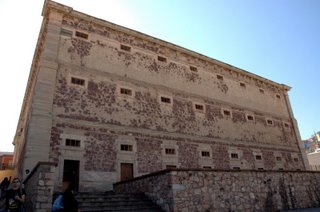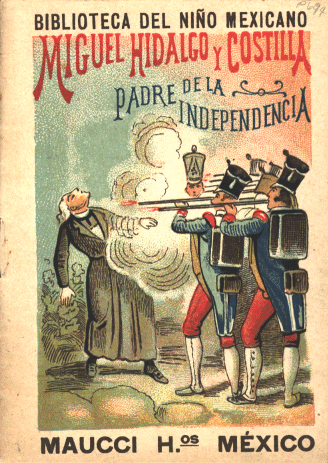September 16

Before dawn, on the morning of September 16, 1810, townspeople of Dolores, Mexico, heard the church bells ring violently. They approached to find the parish priest, 57 year-old Father Miguel Hidalgo y Costilla. But the speech the criollo Father shouted was far from the sermon they had in mind.
Father Hidalgo had just learned that a plan to overthrow the Spanish rulers had been betrayed. Soon the Spanish would arrest all those involved and quash the independence movement. The exact words of the priest’s plea to the townspeople to bring an end to hundreds of years of European rule over the mestizo inhabitants, were not written down. It is said he raised the image of the dark-skinned Virgin of Guadalupe and concluded with a shout: Mexicanos, viva Mexico!
Mexico was still called “New Spain” at that point. Just addressing the crowd as Mexicanos, and willing into existence a land of “Mexico” was revolutionary. Father Hidalgo’s plea is called the Grito de Dolores, the “Cry of Dolores”, after the village in which it was made. But, as Dolores also means ‘sorrows’, it can also be interpreted as the Cry of Sorrows.
Just after dawn, the infant rebel army marched to San Miguel. By the time the rag-tag force reached Guanajuanto at the end of the month, it had swelled to 20,000 men. Though the men were poorly armed and insufficiently trained, their sheer numbers overpowered the small force of Spanish soldiers holed up at the Alhóndiga (public granary). Rebels stormed the Alhóndiga and most of the Spanish, as well as wealthy criollos, were massacred.

Hidalgo and three other Mexican leaders were captured the following year on March 21, near the U.S.-Mexican border. They were convicted of treason, executed, and decapitated. Their heads were placed atop the four corners of the Alhóndiga in Guanajuanto as a message to the Mexican insurgents. There the heads remained for ten years.
On February 24, 1821, Mexican leaders signed the Plan de Iguala, which put forth the principles on which the country would be based, if the independence movement succeeded. Partly inspired by the Plan, conflicting Mexican forces joined together and defeated the Spanish army. The Treaty of Corboda assured the country’s long sought independence.
Father Hidalgo’s body was reburied in the country’s capital.

Today Mexicans celebrate their independence on the day of Father Hidalgo’s fateful shout for the autonomy, freedom, and equality for the Mexican people.

please get the full speech in here!